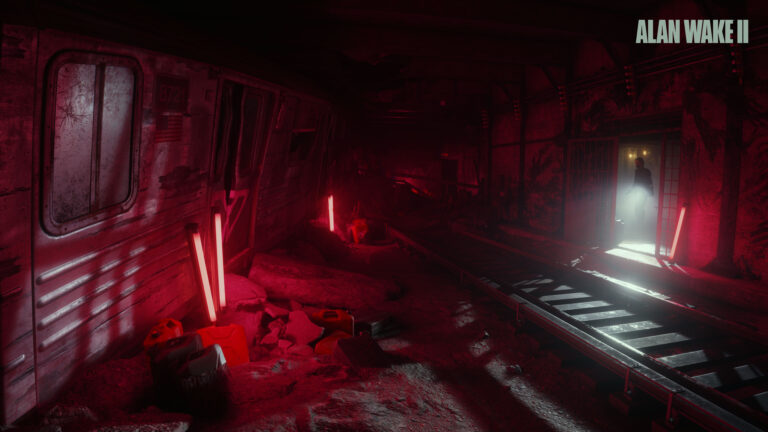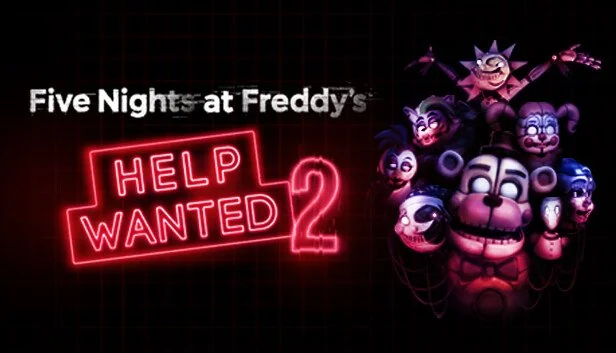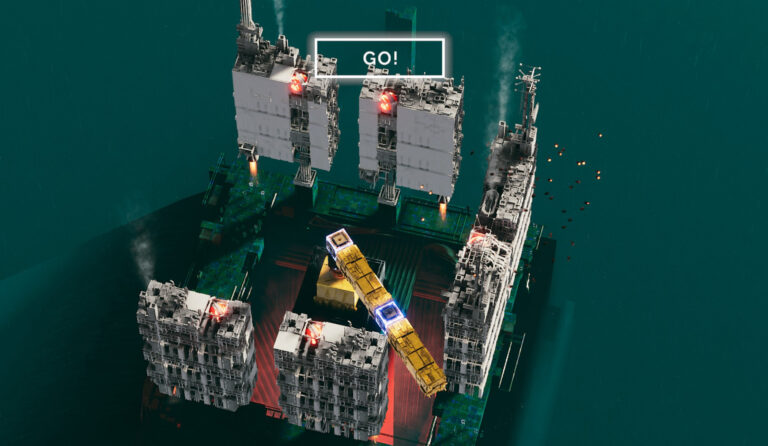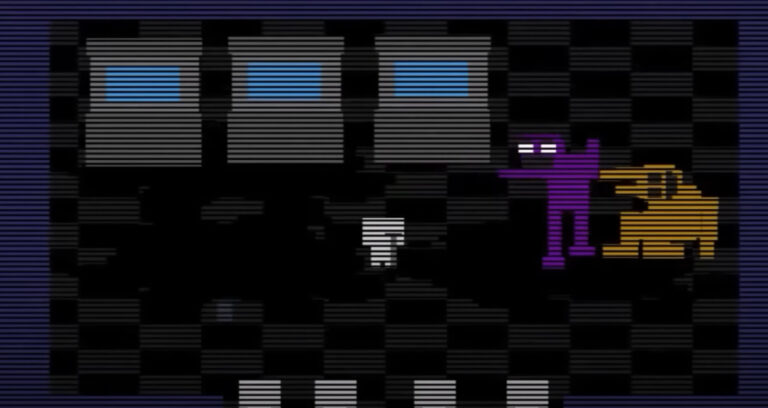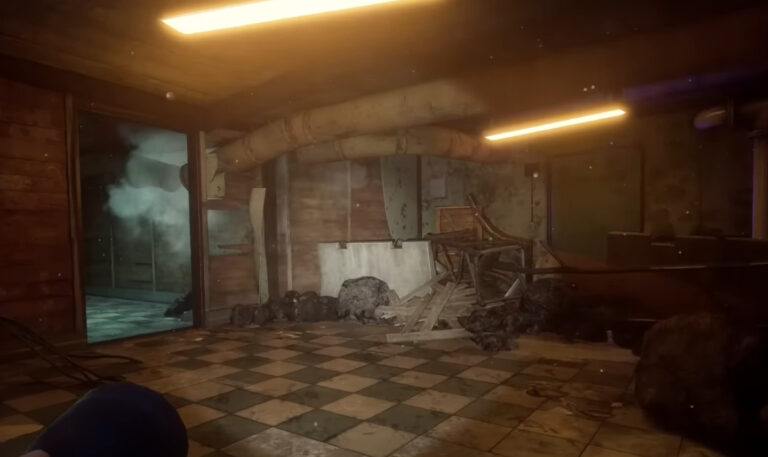Check out our ranking of the best Dungeons and Dragons classes down below.
Alan Wake 2 is a storytelling masterpiece in gaming, blending horror tropes seamlessly into its narrative. The game offers a thick atmosphere, deep characters, and intertwined storytelling with Control. Although reliant on callbacks to previous games, it delivers exceptional combat, pacing, and an enthralling story, making it a must-play for fans of the series and new players alike.
Unravel the mysteries of “Alan Wake 2” as we delve into its new ending, exploring game lore and connections to “Control” and other universes.
In Five Nights at Freddy’s Help Wanted 2, there are two endings. The first ending occurs once you finish the mini-games within the game. The second ending requires finding a variety of secrets within the game world and then being able to witness some additional lore in the game. Original Ending The original ending has you take the Vanny Mask and end up, somehow, handing it to Cassidy at the start of Ruin via the mask bot. Secret Ending Explained In this ending, you go into Princess Quest 4 and continue the “quest” which has you wandering around the game. Eventually there’s a perception change and you’re now within the Princess Quest 4 game, following along in the quest. At the very end, you trade the “Vanny Mask” for a “Glitchtrap Plushie” and then go into the elevator from the trailer. The elevator reveals a large claw machine with the…
The Five Night’s at Freddy’s (2023) (Blumhouse) movie has been released and with it a new story in the FNAF universe has been added. The movie, taking place in its own universe, follows the story of Mike Schmidt as he just tries to work as a night security guard at a local abandoned pizzeria. The movie is not canonical to the games and resides within its own canonical universe. Easter eggs, focused around the security cameras in the game, have tie-ins relating to the games, but the story doesn’t mirror the games. The story of the FNAF movie focuses on survival horror of Mike, Abby and Vanessa in the pizzeria, surviving the ghosts within the animatronics both mentally and physically. We’ve got full spoilers on the entire story along with the ending below. If you’re looking for game lore, check out our Ruin’s Ending Explained. Our summary is condensed to…
ABRISS is a beautiful puzzle game that is engaging both visually and auditorily. It’s a thrill to work level by level and engage various Rube Goldberg-esq contraptions to destroy the level. It’s even more thrilling to replay each level to perfect your build and get a higher completion rate. Ultimately, for the price, ABRISS is a must buy if you love puzzle games, demolition and kickin’ rad audio. Destruction & Controlled Mayhem ABRISS has you place various items in the game to fall, move or be controlled to destroy various red targets. Each level has a more or less ideal solution to it but there’s some room to be creative past the tutorial levels. There’s definitely room to tighten up your build to destroy more and get a higher score or better shots in the photo mode / gif creator. The game doesn’t have a story or depth or tricks…
Armored Core VI’s story has a lot of elements to it and requires three full playthroughs to get the most out of it. We’ve got the entire story, all the tidbits you want to know and who the different players are in the story. Find out who ALLMIND really is, what Handler Walter is up to and what the Coral truly is. The story is told both in cutscenes and sorties, but also in lots of data obtained from wrecks. We use everything in the game to bring you the most complete story available for AC6. You can learn more about the game on the official website for AC6. The Story Summarized Armored Core IV’s timeline can be summarized as follows. Rubicon 3 & The Fires of Ibis The planet Rubicon 3 was engulfed in a firestorm when Coral was ignited by Ibis. Although Rubicon 3 was greatly damaged, with…
The Mimic can be considered to be William Afton’s soul transferred to an animatronic, known as Springtrap that’s had the springlock suit break apart. Springtrap, after being burned, becomes Burntrap. Burntrap, after being left alone for a while and decaying to its endoskeleton, becomes the Mimic. This is one possibility. This is supported by the fact that the model for the Mimic is based on Burntrap. While it doesn’t have a rabbit-like face, it does fit into the Burntrap suit perfectly. An alternate possability is that The Mimic in Security Breach is the endoskeleton of Circus Baby. It’s theorized that Circus Baby was a springlock suit and that there was an endoskeleton inside. This is why the only time you see Baby in Sister Location, she’s in the same position as Golden Freddy, another springlock suit. The Circus Baby springlock suit was destroyed in the fire but the endoskeleton, aka…
There are three endings in FNAF: Security Breach – Ruin. We’ll go over how to get the three endings first. Then we go into what exactly happens along with some expose on popular theories. Then we’ll go into some of the personal characters. To be very blunt, the ending to FNAF: Security Breach – Ruin is left hard to interpretation and theorizing. Steel Wool gave 100% into the theorist community in regards to how they developed the endings; they’re much more choose your own interpretation of the game’s meaning. The official three ending names are now “Neutral”, “Brazil” and “Scooped.” That wraps it up for our coverage of FNAF: Security Breach – Ruin’s endings.
Truth is what we’re best known for and I’d like to start this off with an honest one: Testament: The Order of High Human is expected to be perfect and is not. It is a beautiful, gorgeous game with deep lore and very fun puzzles with some decent combat. It has an old school scrappy developer vibe to it that makes a lot of old games endearing with graphics that appeal to the modern eyes. We don’t use numerical rankings because it’s sitting on 6/10 on Steam right now and is at “All Reviews: Mixed” on a sample size of roughly ~20. I don’t think games that have the artistic depth that Testament does deserve to be put on a numerical scale where anything below 8 is a waste of your money. There’s an audience out there for Testament who love this style of game and when it comes to…


